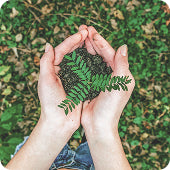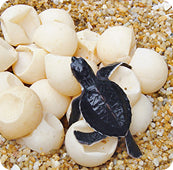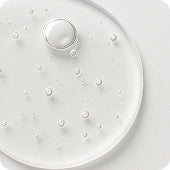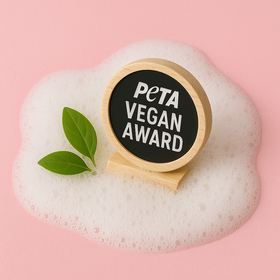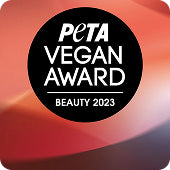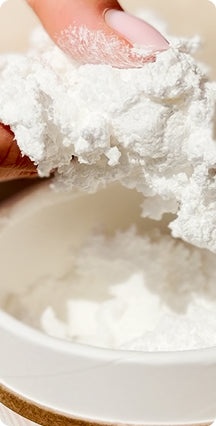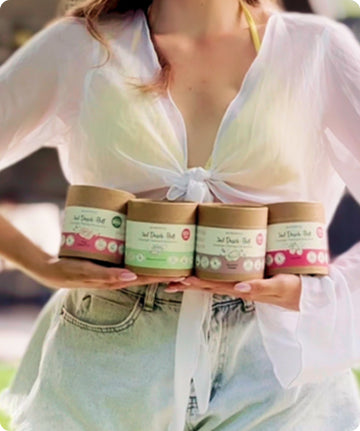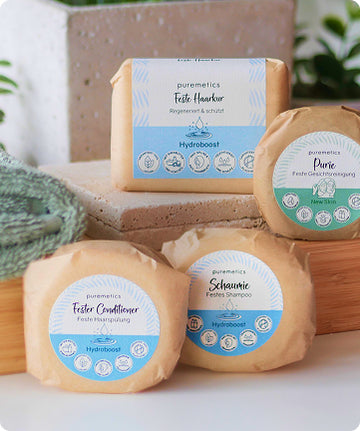Fresh laundry, but no plastic, please
Fresh laundry, but no plastic, please

Do you feel before that Detergent shelf also so overwhelmed? Detergents for all kinds of textiles: white, colored, black, liquid, solid, mild detergent, heavy-duty detergent, fabric softener, etc...
The list of ingredients is as long as the list of detergents.
Many conventional laundry detergents contain enzymes, petroleum-based surfactants, optical brighteners, and artificial fragrances and additives. Most of them pollute our wastewater.
- Ökotest has 40 percent of the tested detergents Microplastics detected
In addition, most detergents are only available in plastic packaging to buy. The microplastics get into the waste water through the wash cycle.
The microplastic particles come not only from the detergent, but also from our clothes. Made of clothing with synthetic fibers made from plastic. A UK university in Plymouth found that an average wash can produce up to:
- 138,000 fibers polyester-cotton blend
- 496,000 fibers of pure polyester and
- 730,000 fibers of acrylic fabric
released into the water because the washing machines cannot filter the microplastics out of the water. Most sewage treatment plants cannot filter all of them either. As a result, many microplastic particles get through the wastewater into open waters and thus into the seas. Some of the plastic particles end up in the sewage sludge. If this is then dumped on fields, the plastic also ends up in the soil.
That's why the gentle cycle is anything but gentle!
For delicates, washing machines offer a gentle cycle on the particularly gentle textiles is. However, the University of Plymouth found out that a particularly large number of microplastic fibers are detached from clothing on a gentle cycle. This is because the amount of water used in this wash cycle is much larger, which means that more fibers are washed out. Clothing that has had fabric softener added to it also tends to shed more fibres.
To filter and catch the synthetic fibers, there are of guppyfriend a wash bag. This prevents the fibers from getting into the sewage by simply catching them. These collect in the corners of the bag and can easily be disposed of with the residual waste. Important: Do not wash the bag!
What else can we do?
Instead of buying clothes and textiles made from synthetic fibers, we can choose clothes made from natural fibers. There are also ways to protect the environment from microplastics when doing laundry.
How about, for example, ecological and self-made washing powder?
For whites and coloreds:
- 200g curd soap (without palm oil and animal fats, e.g. from health food stores)
- 300g washing soda powder
- 300g baking soda
- A consumable vessel (e.g. a mason jar)
Here's how:
Simply put the soda and baking soda in the container, finely grate the curd soap. Refine with a natural fragrance oil as desired. Close the jar and shake well. Use about one heaped tablespoon per wash.
For whites:
- Just add 300g of citric acid
washing clothes with chestnuts:
In autumn you can pick up chestnuts that have fallen from the tree and use them to make your own detergent. Horse chestnuts contain naturally occurring plant surfactants. When combined with water, saponins form foam and are washing-active. Since the detergent made from chestnuts does not contain any fragrances, it is also very suitable for allergy sufferers.
Here's how:
You only need 8-10 chestnuts. Wash them off just in case. Chop up the chestnuts with a knife. Put the chestnuts in a glass with about 300ml of water and let them steep until the liquid turns milky. After the exposure time, you can pour off the sudsy water and add it to your laundry.
washing clothes with Ivy:
However, since you cannot collect chestnuts all year round, there is also the alternative of washing your clothes with ivy, as this also has a high saponin content.
Here's how:
Just take a handful of ivy leaves and 300ml of water. Chop the leaves and pour boiling water over them in an airtight glass jar. Then just close it and let it draw.No time, no desire?
Fortunately, there are also detergents without plastic packaging and without microplastics. Everdrop has, for example, produced detergent that is vegan and completely free of microplastics.
Ecological detergents are usually made from natural raw materials. The range of sustainable ecological detergents has grown significantly in recent years, but you should keep your eyes open here too:
- Advertised as environmentally friendly can also mean that only the packaging is sustainable
- "Organic" can still mean that they contain synthetic and therefore potentially harmful substances
Tip: Keep an eye out for these seals and test marks: "Sustainable Cleaning", the "European Ecolabel" or the "Blue Angel".
Our conclusion:
Eco-friendly laundry doesn't have to be difficult. Skipping the gentle cycle saves resources and money. When it comes to detergent, simply pay attention to the right seal or make the detergent yourself very quickly. So you always know exactly what's inside.
If you would like to be informed directly about the latest blog posts, please follow us Instagram ! :-)



